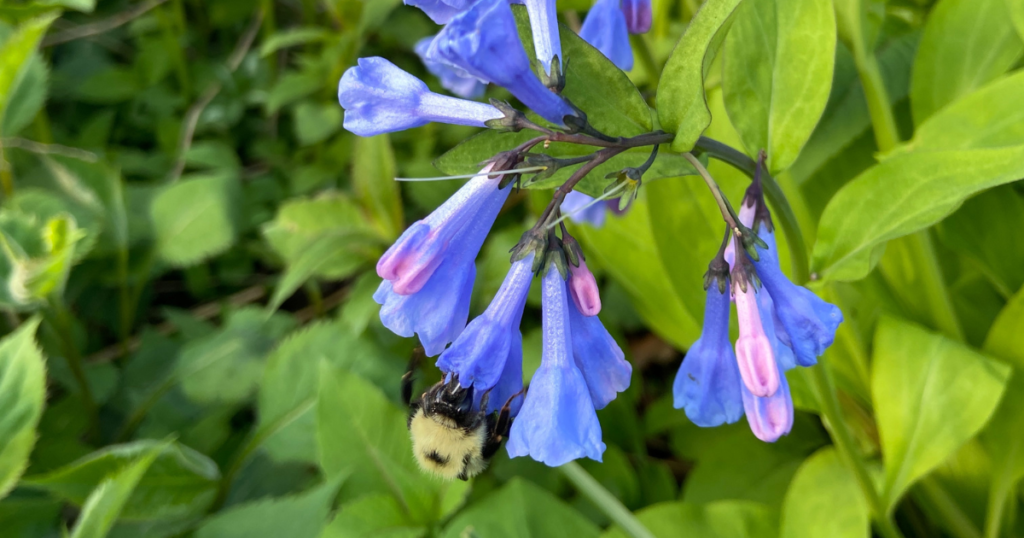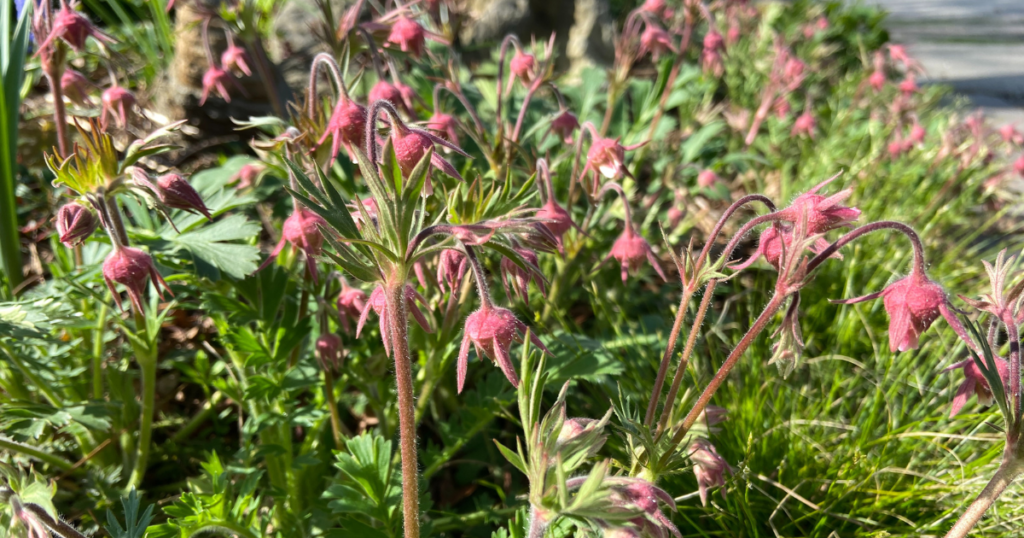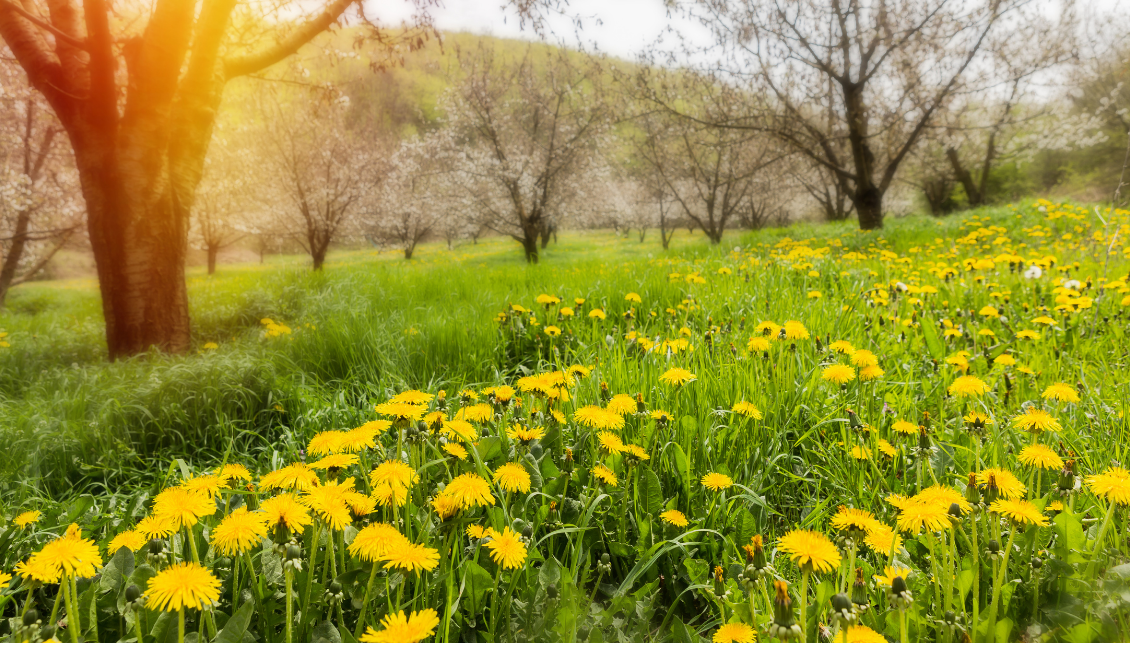The buzz about dandelions is well-meaning but misleading
No Mow May is a catchy slogan and well intentioned idea, but does it actually help bees?
The truth is: not really.
Pollen from early blooming native trees and native spring wildflowers provides far better nutrition for bees.
You can take real action for bees — and birds and butterflies — by shrinking your lawn, adding native wildflowers and other native plants to your garden, and waiting until the warmer weather has arrived in late April / early May to do your garden clean up.

The problem with No Mow May
No Mow May got its start based on the idea that dandelions provide much needed nutrition for bees in early spring.
And bees – especially native bees – DO need our help!
Native bees are our most important pollinators.
There are approximately 3,600 species of native bees in North America, and many are at risk due to habitat loss, pesticide use, climate change and introduced diseases.
Native bees, including endangered species like the rusty-patched bumble bee, evolved to feed off native flowering plants.
However, dandelions aren’t native to North America and they aren’t the first or best source of food for native bees in the springtime.
Better food for bees
The good news is that there are many beautiful native wildflowers that bloom in springtime before and around the same time as dandelions.
Bloodroot, many violets, Virginia bluebells, wild columbine, prairie smoke, wood poppy and marsh marigold are just a few examples of wildflowers blooming in late April / early May that bees will seek out in your garden. Native trees like elm, willow, maple, poplar, redbud and serviceberry also provide an early and important source of pollen for bees and other pollinators, along with fruit trees like cherry and apple.
Visit conservationist and author Heather Holm’s website for an excellent source of pollinator information including native plant lists and soil types for your garden.

Delay and minimize spring garden cleanup
Another important way to support biodiversity in your backyard is by delaying your spring garden clean up until late April or May when night temperatures are consistently above 10 degrees Celsius (50 F).
Old seed heads and plant stalks feed and provide nesting materials for many bird species (orioles love stripping down swamp milkweed stalks for their nests!) Leaf litter in your gardens protects your plants from freeze and thaw cycles and provides important habitat for bees and other beneficial insects (and those insects help feed the birds and their nestlings come spring).
Much of that leaf litter can be left right where it is to slowly decompose over the summer months and help retain precious moisture in the garden bed. The new growth will soon hide it. Plant stalks can be cut down to about 12-18 inches. This provides a natural support structure for new growth and nesting sites for some bees and other beneficial insects.
See these tips from the Xerces Society to help you decide when the time is right for spring garden cleanup.

The case for dandelions
While No Mow May doesn’t entirely live up to its promise, it doesn’t hurt to let the grass grow longer and to tolerate a few dandelions dotting the lawn. Dandelions are vastly preferable to the harmful impacts of chemical weed killer on bees, birds and other wildlife.
If you’re not keen on dandelions, the simplest natural way to control them is to cut off the flowers before they go to seed, and pull the plants out when the soil is moist and soft, removing as much of the tap root out as possible. It takes a bit of time and effort but it can be done. Or consider cutting down the amount of lawn you need to care for by planting native ground covers and perennials instead.
How about ‘No Blow May’ (better yet: ‘No Blow’ anytime of year)?
One truly positive change would be to stop using leaf blowers for lawn and garden cleanup.
How about a “No Blow” commitment all year long? Leaf blowers are like a wrecking ball for biodiversity, plus they contribute to climate change and they spew pollutants that can harm your health.
Let’s take the idea of No Mow May and turn it into meaningful action for biodiversity all year long by planting more native plants, delaying spring cleanup and saying no to harmful garden practices, like leaf blowers, that hurt far more than they help.

